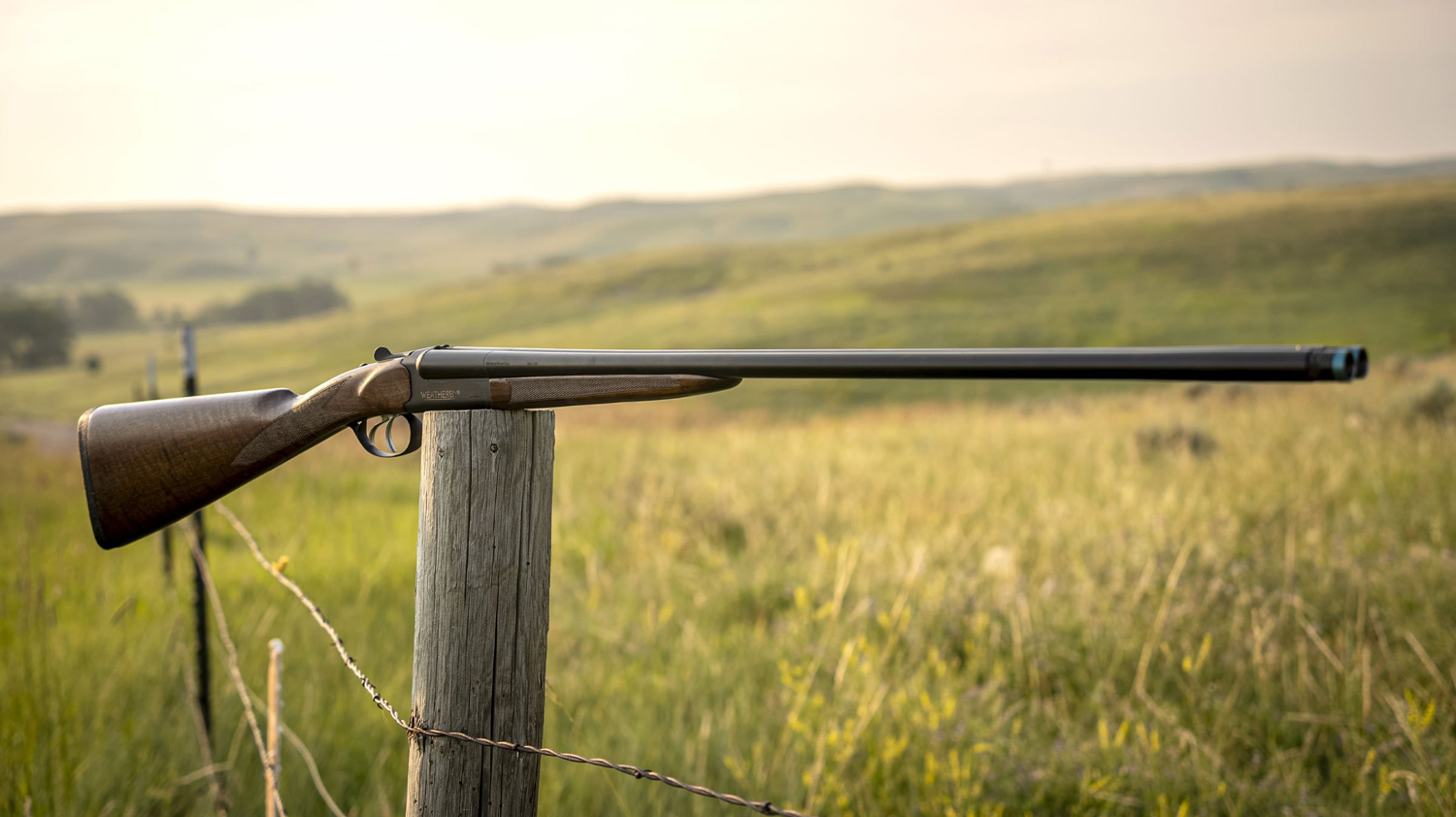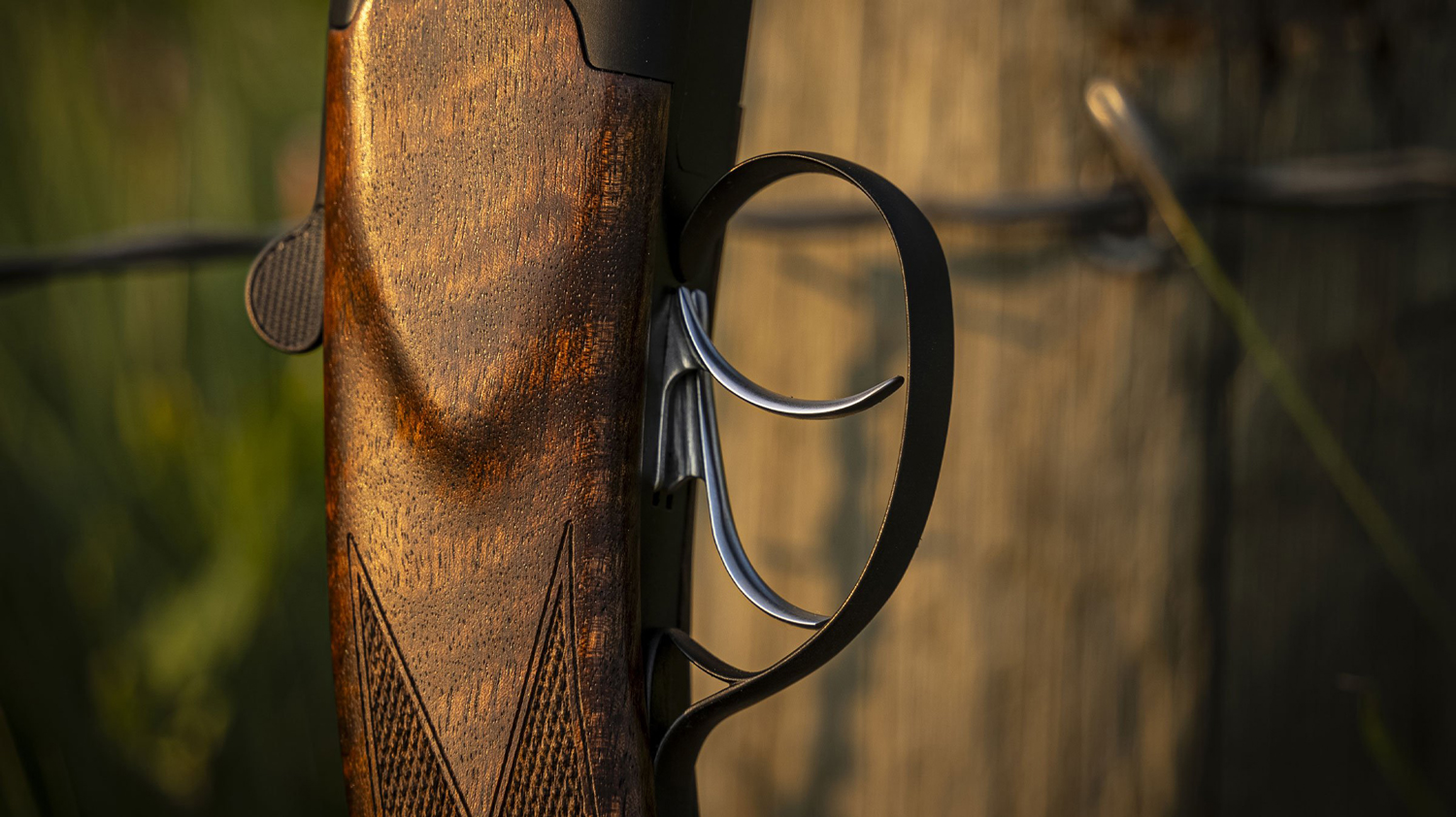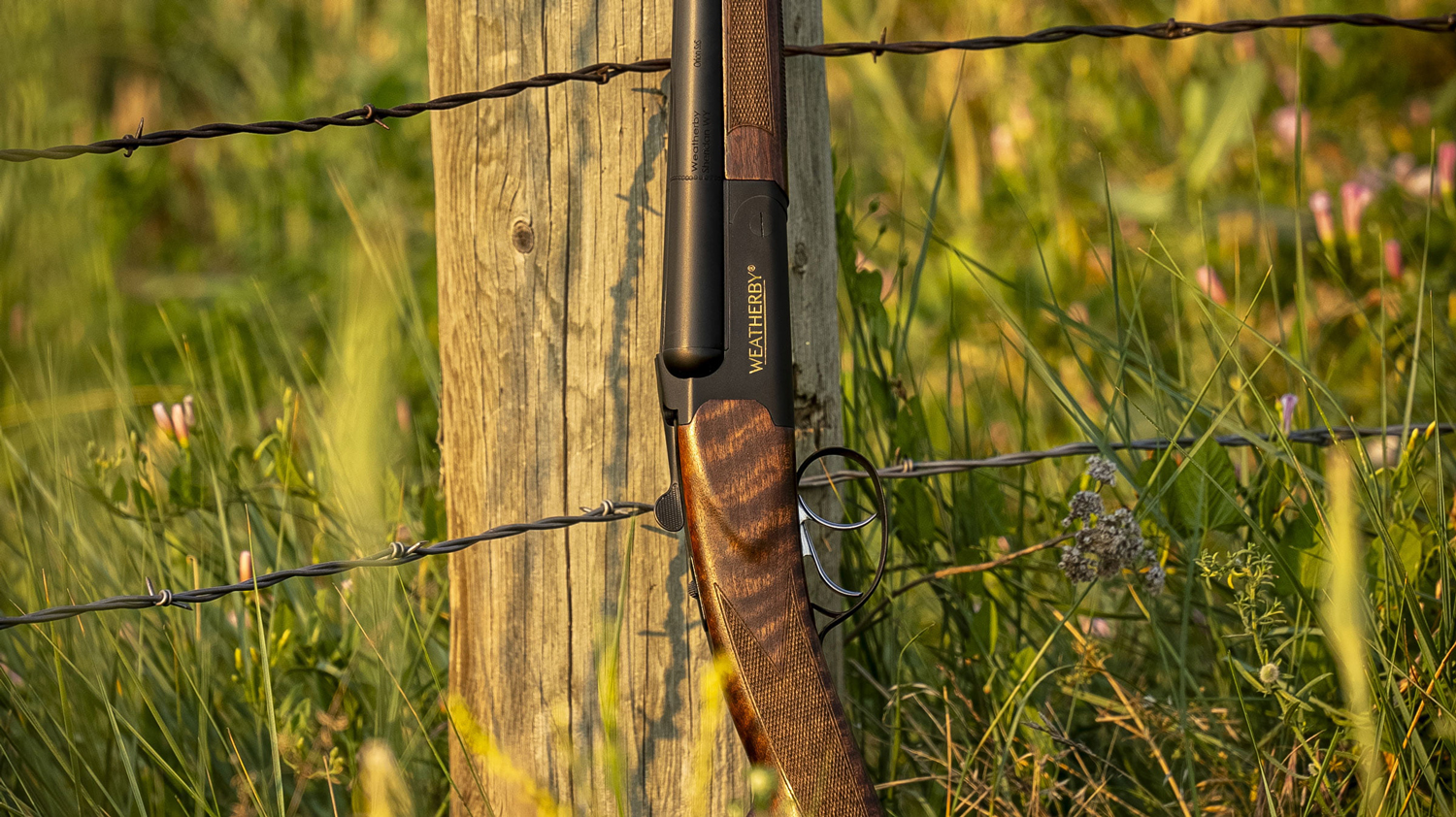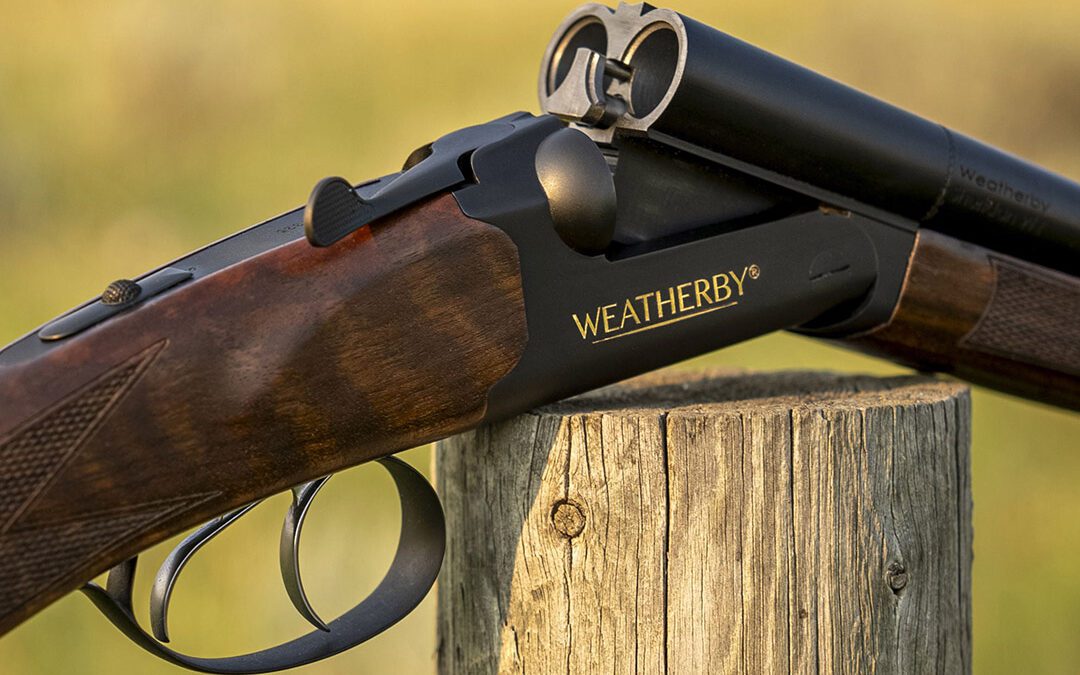As far back as I can remember, the Weatherby name has been associated with high-quality rifles. Roy Weatherby was one of the great innovators of his day, and an early proponent of super-high-velocity rifles. That’s how the Weatherby name was made! Roy is long gone now, but the company lives on. It still wears his name and in the past few years, has branched out a bit. A few years back, Weatherby got into the shotgun market with some success. It has several nice semis in its line-up and an over/under, made in Turkey. Just recently, Weatherby made the decision to dabble in the side-by-side market with its “new Orion” side-by, which also originates in Turkey.
The new Orion side-by-side is not delicate. Nor is it a wispy, quick-handling, grouse and woodcock gun. The one that they sent me is an entry-level 12 gauge, and it’s a real brute. The gun has a matte finish on the metal and a semi-gloss on the wood. The barrels measure 28 1/4 inches and with extended choke tubes, they reach 29 1/8 inches altogether. The sample gun has manual extractors, double triggers, a splinter forend and a burly, fist-filling straight English-style wrist. My sample has a length of pull measuring 15 inches even. The stock drops 1 5/8 inches at comb and 2 1/2 inches at heel. It tips the scales at a trifle over 7 1/2 pounds. The 3-inch chambers will handle any shell of that length or less and can deliver as much as a hefty 1 7/8-ounce of shot.

I’ve spent quite a bit of time with this gun, and after considerable study, I concluded that it was never intended to be an upland gun or even a general-purpose gun. I finally figured out what it is, and that’s a “cracker jack” turkey gun. Or perhaps an equally splendid duck and goose hunter.
In that respect, it reminds me of my old Parker. The old thing has a matte finish, too. It didn’t start out that way, but more than 100 years of hunting have made it so. The point is, that it ain’t flashy, and, as a result, it’s nearly invisible to waterfowl and sharp-eyed turkeys, and that’s an enormous advantage in the field. With its burly build, the Parker will really take the guff of turkey and waterfowl hunting, and the Weatherby Orion should, too.
To tell you the truth, I’ve never cared for the aesthetics of choke tubes of any kind on a side-by, but their utility for turkey hunting is undeniable. The use of choke tubes allows a little experimentation with chokes. A half-century of experience with turkeys taught me that the best combination of shot charges was one that delivered a max charge of No. 6 shot from the first barrel, which should pattern as tightly as possible. The back-up shot needs to be a similar charge of No. 2 shot, and it may take a bit of experimentation to find out what choke works best in any gun. You can do that with the Weatherby because of the screw-ins.

Why that particular combination? The charge of No. 6 is, of course, for the head shot. If that doesn’t work, then you can whack him with 2s. A running or flying turkey is hard to handle with the smaller shot, because they don’t have enough penetration, but the 2s will penetrate completely through the bird and settle him down in a heartbeat.
Similarly, the choke tubes are handy when picking your favorite load for waterfowl. In the “good old days” before non-lead shot was mandated, things were a bit simpler. Hard lead shot and tight chokes generally did the job. Today, there is an abundance of types of non-lead shot. With choke tubes, you can try multiple choke-and-shot combinations until you find the combination that patterns best.
As my evaluation progressed, I discovered that the Orion tracks well on clay birds, too. The weight and barrel length simply won’t allow you to stop your swing. I guess, in retrospect, that the gun would also serve well for the fellow who wants to have a try at clays with an inexpensive side-by-side. In that case, the choke tubes would come in handy as well.

The final word is that, above all, the gun is no sissy! Duck boats and turkey blinds are famous for their ability to inflict damage on guns, but I have no doubt that this one will take anything they can dish out. As always, time and use are the only determiners of how a shotgun will fare in the long run. No short-term evaluation can predict how it will be judged after 30 years of hard use, but I can tell you that it seems to be soundly made and it works as it should with no malfunctions. Maybe I can persuade the folks at Weatherby to leave it with me through the winter and spring. If so, I’ll try to drag it through a few duck boats and turkey swamps, so I can report back on how it holds up!

